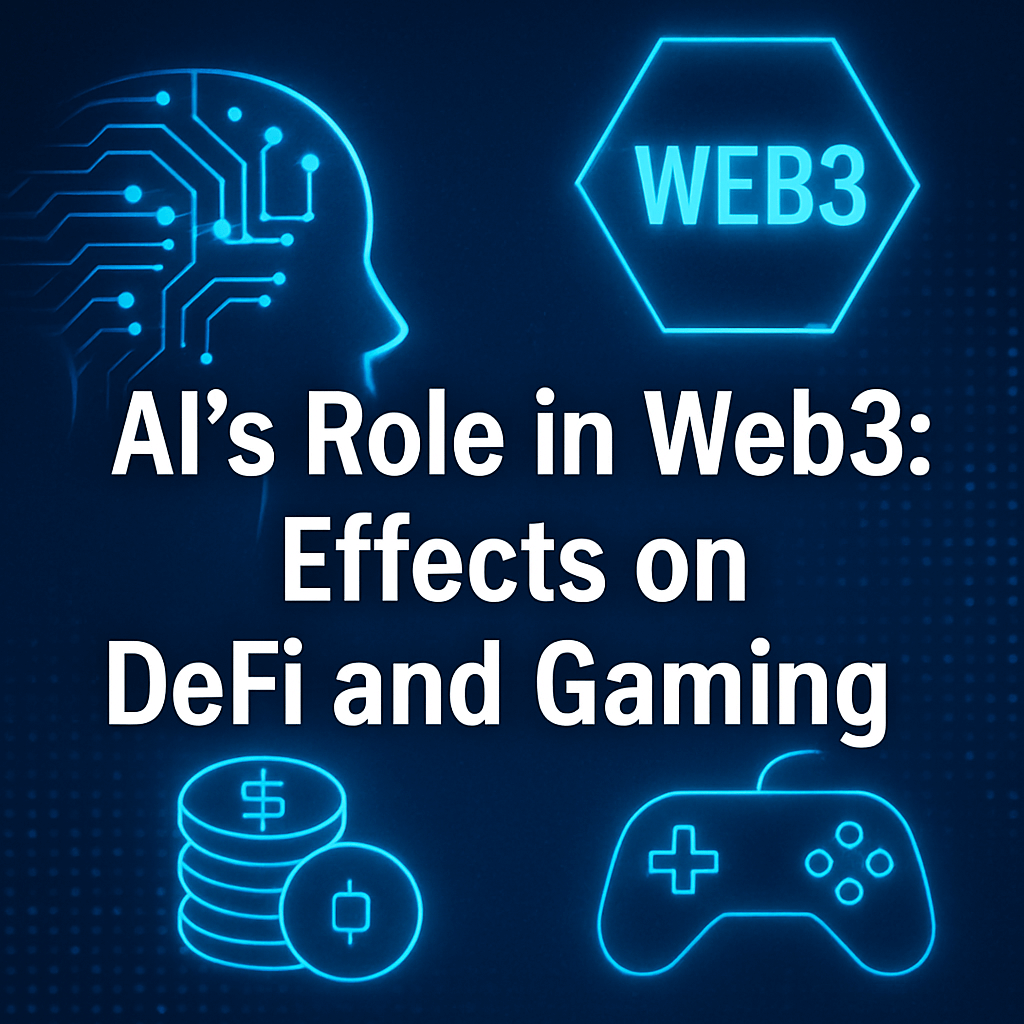AI’s Role in Web3: Effects on DeFi and Gaming


The integration of artificial intelligence (AI) into decentralized applications (dApps) is reshaping the landscape of Web3, significantly affecting the decentralized finance (DeFi) and Web3 gaming sectors. According to a recent report from DappRadar, the number of daily unique active wallets interacting with AI-powered crypto applications surged by 23% in May 2023, indicating a noteworthy shift in user engagement and market dynamics.
Growth of AI-Powered Applications
The rapid growth in unique active wallets demonstrates a clear appetite among users for AI-integrated solutions. These applications leverage machine learning algorithms and AI technology to enhance user experiences, optimize trading strategies, and automate complex processes.
- Machine Learning Algorithms: These algorithms analyze large datasets to predict market trends and user behaviors, allowing for real-time adaptations to changing conditions. Users benefit from improved decision-making capabilities based on enhanced analytics.
- Personalization: AI capabilities recommend tailored investment strategies and gaming experiences based on individual user preferences and historical interactions, which can lead to higher user satisfaction and retention rates.
Impact on DeFi and Gaming
AI’s increasing foothold in Web3 has important implications for both the DeFi and gaming sectors. DeFi, which relies on decentralized protocols to facilitate financial transactions without intermediaries, is witnessing a growing number of platforms that utilize AI for risk assessment and fraud detection.
AI in DeFi
As DeFi platforms embrace AI, they can provide more secure and efficient services, enhancing the overall trustworthiness of the ecosystem. Some ways in which AI is transforming DeFi include:
- Risk Management: AI models offer predictive analytics to assess loan defaults and market liquidity, allowing for better risk mitigation strategies.
- Fraud Detection: Machine learning algorithms can identify suspicious activities at an early stage, reducing losses and increasing investor confidence.
AI in Gaming
Similarly, the gaming segment of Web3 is integrating AI to create immersive experiences that dynamically adapt to player interactions. AI-driven games can analyze how players engage with game mechanics and optimize the gaming environment accordingly.
- Dynamic Content Creation: AI can generate unique quest lines or virtual environments in real-time, maintaining player engagement by offering new and tailored experiences.
- In-Game Economies: AI can balance in-game economies effectively to ensure fair competition, enabling a sustainable gaming ecosystem.
Market Dynamics and Future Projections
The findings from DappRadar suggest that as AI technologies continue to evolve and integrate into various sectors, we may witness sustained growth in AI-powered applications, potentially at the expense of more traditional DeFi and gaming platforms. This trend poses strategic questions for existing projects in these sectors:
- How will traditional DeFi platforms adapt? With AI becoming an essential feature, established platforms may need to adopt AI functionalities to remain competitive.
- Market Mergers and Partnerships: Expect to see collaborations between AI developers and blockchain projects to innovate and optimize user experiences across dApps.
AI’s role in Web3 signifies a transformative phase that spans across sectors, challenging incumbents and reshaping future developments.
Conclusion
The incorporation of AI into Web3 is a crucial development that affects DeFi and gaming. As the user engagement metrics illustrate, the demand for AI-powered applications is on the rise, with important implications for market participants. Stakeholders must navigate these evolving landscapes carefully, considering how AI can enhance security, efficiency, and user experience.